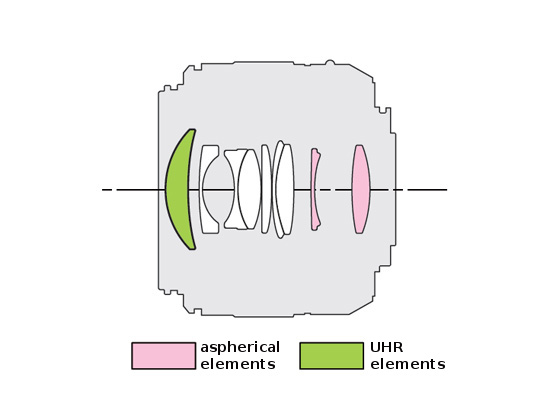Panasonic Leica DG Summilux 25 mm f/1.4 ASPH.
3. Build quality
In the photo below the tested lens is positioned between the 1.7/20 Panasonic pancake and the Olympus 1.8/45.
Please Support UsIf you enjoy our reviews and articles, and you want us to continue our work please, support our website by donating through PayPal. The funds are going to be used for paying our editorial team, renting servers, and equipping our testing studio; only that way we will be able to continue providing you interesting content for free. |
- - - - - - - - - - - - - - - - - - - - - - - - - - - - - - - - - - - - - - - - - - - - - - - -
The lens starts with a metal mount with contacts. Inside the mount there is a rear element, hidden by about half a centimeter inside. It is immobile and 22 mm in diameter.
On the black housing of the lens, immediately behind the mount, there is a part with the parameters of the lens, the info that it was made in Japan, its working range (from 0.3 of a meter to infinity) and an inscription informing that Nano Surface Coatings were used here. The next part consists of a manual focus ring. It is 2 cm wide and is covered by rubber ribs. The mechanism moves smoothly and is well-damped. Running through the whole scale needs a turn through about 250 degrees so the working range is wide enough to allow you precise settings. It is a pity, though, that the producer didn’t come up with an idea of providing any distance scale and depth of field scale, which, in such a fast prime instrument, would be really right in its place.
The lens ends with a hood mount which surrounds a non-rotating filter thread, 46 mm in diameter. Inside, there is also an inscription with the name and parameters of the lens and an immobile front element, with a diameter of 28 mm.
Despite the fact that the name of the lens can sound similar to the Leica D Summilux 25 mm f/1.4 – a 4/3 system device - thier inner constructions are completely different. The tested lens consists of 9 elements positioned in 7 groups. Two elements are aspherical and another one was made of high refraction UHR glass. Additionally we get an aperture with seven rounded diaphragm blades which can be closed down to f/16 and a filter thread, 46 mm in diameter. The producer also boasts of using anti-reflective Nano Surface coatings.
 |
In the box with the lens come two caps, a hood and a storage bag.






